Efficiency as a function of Eta, Vz
Because of the asymmetric VZ distribution (shifted toward negative VZ) and limited EMC acceptance (west barrel only), there's a moving turn-on for the electron identification efficiency at the edge of the EMC.
The objective of this page is to study how the efficiency vs eta changes with VZ, and possibly to determine a moving eta cut for different ranges of VZ.
The current VZ cut is -40 cm < VZ < 20cm.
The efficiency has been calculated and plotted for 6 x 10 cm segments of VZ.
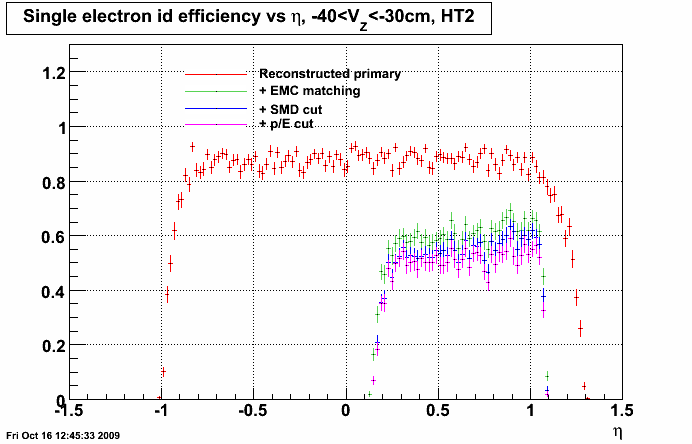
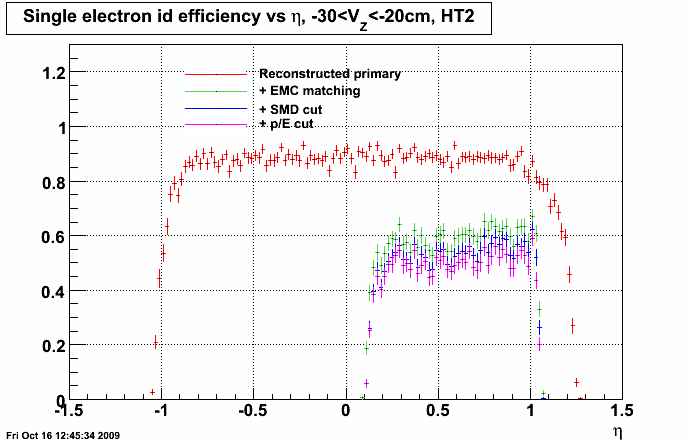
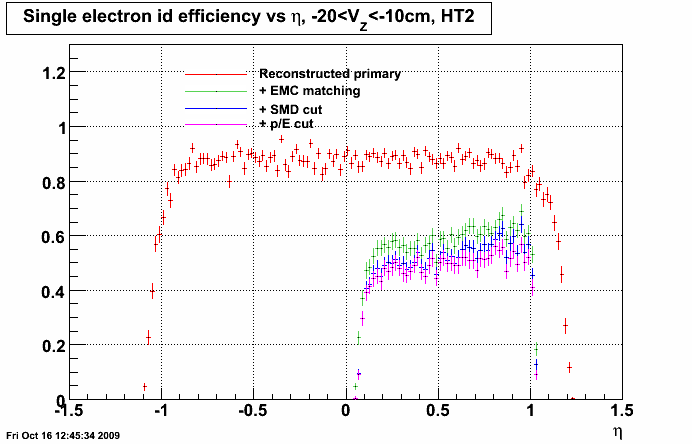
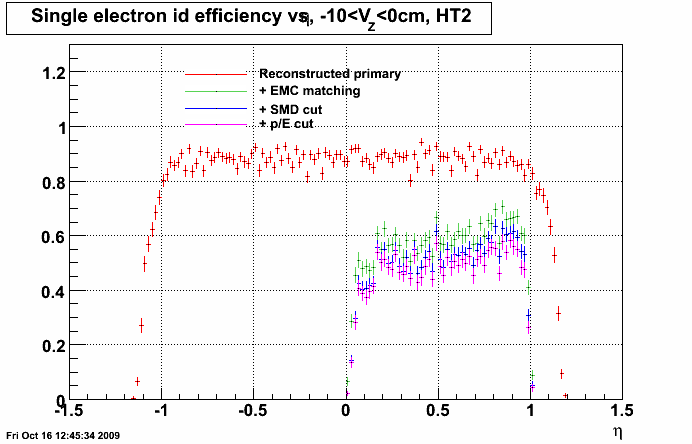
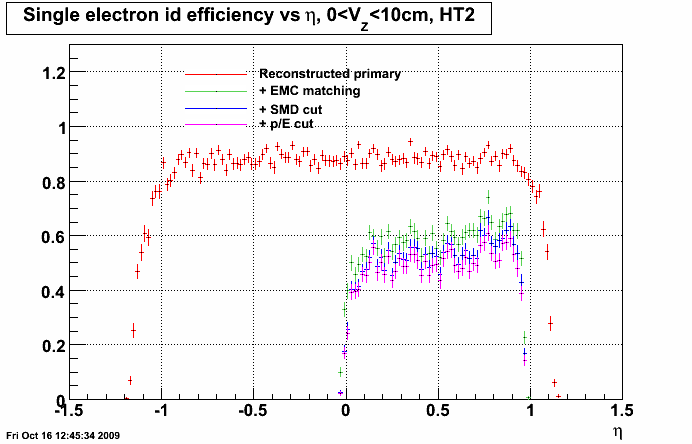
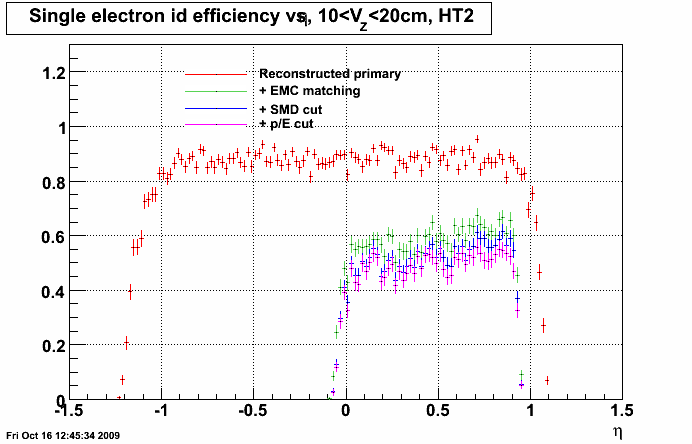
The most negative VZ events have relatively flat efficiency in eta for 0.3 < eta < 1. Whereas the most positive VZ events have the flat efficiency region starting as early as eta > 0 but only going so far as eta < 0.8. The easiest cut would just be to do a uniform cut
0.3 < eta < 0.8
However, I'm likely to lose significant statistics from the stricter lower cut. Additionally, I'm not entirely convinced the upper cut can be extended to 0.8.
The usual cut of
0 < eta < 0.7
is driven by the idea of increased photonic electron background past eta > 0.7 due to increased conversion from support structures. On one hand, study of electron rates and ratio between inclusive and photonic electrons in 2005 data shows no visible sudden increase in photonic electron rate past eta > 0.7.
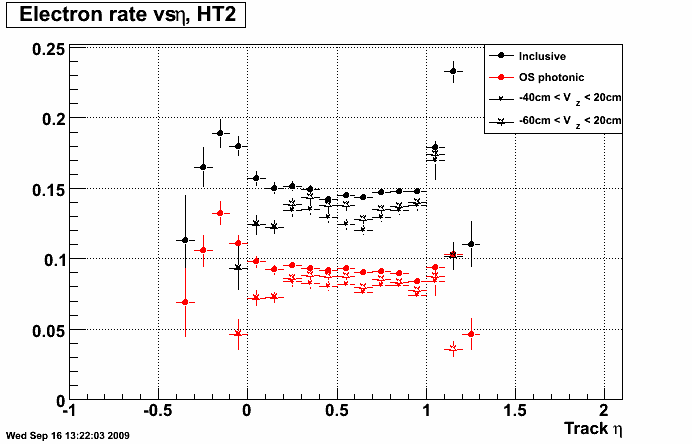
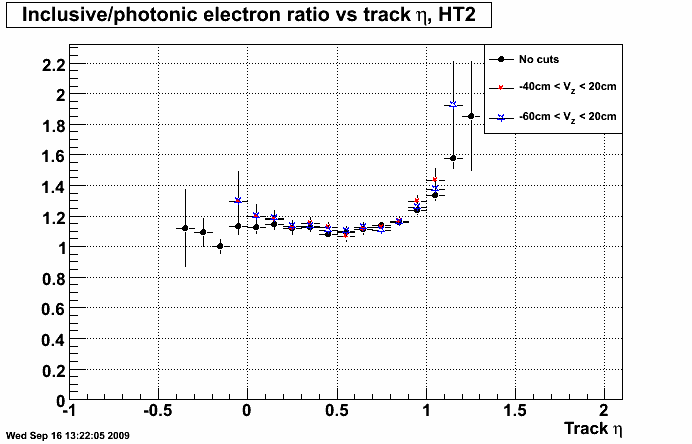
On the other hand, the 2005 inclusive electron raw yield as a function of track eta shows an obvious increase in yield at eta > 0.7.
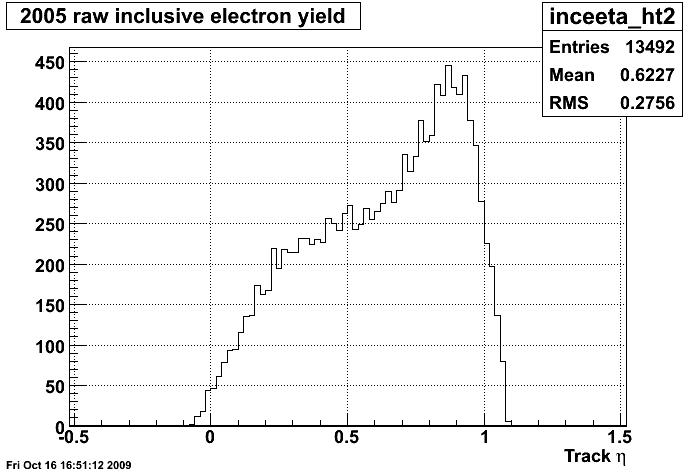
A quick look at this yield shows that a 0 < eta < 0.7 eta cut removes over 45% of electrons. Narrowing it down to 0.3 < eta < 0.7 is approximately a 25% reduction in statistics, as a total of 60% of electrons would then be excluded. Extending the upper cut to 0.8would recover some electrons, and 0.3 < eta < 0.8 cut yields similar statistics as the usual 0 < eta < 0.7 cut. It's just not clear whether that would have a higher fraction of photonic electron background. Either way, the yield, as separated by slices in VZ shown below suggests that at the very least, a moving eta upper limit may not be too unreasonable.
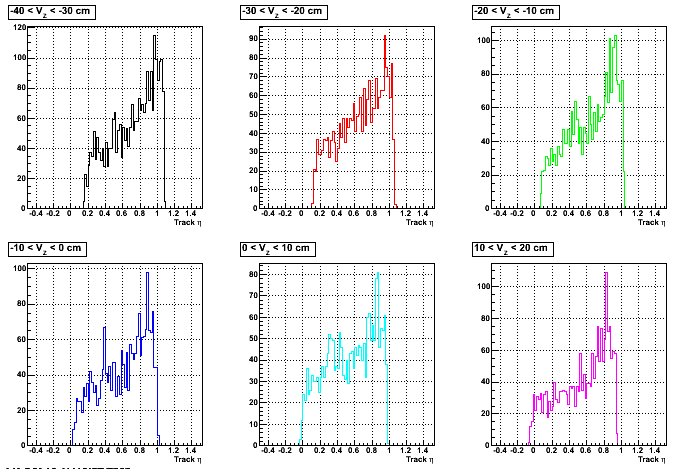
I've decided to go with a 'moving' eta cut, i.e. different eta cuts for different VZ cuts. The goal is to maximize statistics, minimize background, and stay within a relatively flat region of electron reconstruction efficiency. The lower eta cut is driven mostly by the efficiency, whereas the upper eta cut is mostly driven by the yield (to minimize background).
New eta cut:
- -40 < VZ < -20 cm, 0.3 < eta < 0.9
- -20 < VZ < 0 cm, 0.2 < eta < 0.8
- 0 < VZ < 20 cm, 0.1 < eta < 0.7
- kurnadi's blog
- Login or register to post comments
